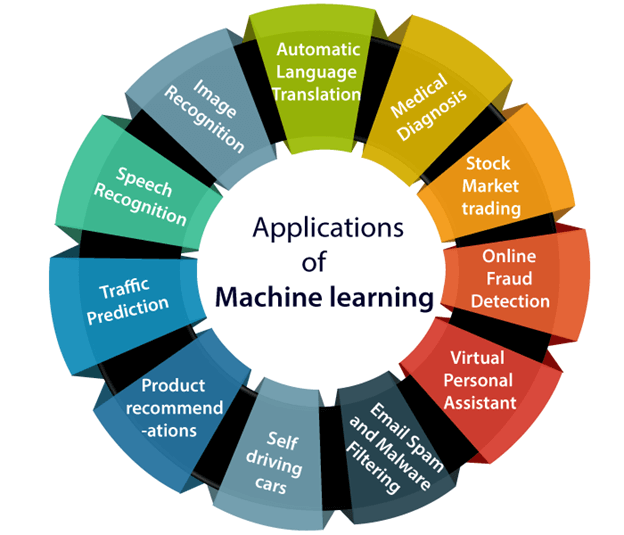What Is Machine Learning Used For?
Machine learning is a subset of artificial intelligence (AI) that enables computers to learn from experience and data. It is a powerful tool that allows machines to learn from data and recognize patterns in order to make decisions and predictions without explicitly being programmed. Machine learning is used for a variety of tasks, from recognizing faces in digital images to predicting stock market trends. It is also used for medical diagnosis, text translation, and advanced robotics. Machine learning can be applied to a wide range of problems, from predicting customer churn to fraud detection. Ultimately, machine learning is used to make decisions, automate processes, and provide insights that would otherwise be too difficult or expensive for humans to do manually.
Overview of Machine Learning
Machine learning is an advanced technology that enables computers to learn from data and experience, without explicit programming. It uses algorithms and statistical models to identify patterns in large datasets, allowing computers to make predictions, determine cause-and-effect relationships, and make decisions with minimal human input. This technology has the potential to transform a variety of industries, from healthcare to finance, and is already being used to improve products and services, automate processes, and optimize operations.
There are two main types of machine learning: supervised and unsupervised. In supervised learning, the algorithm is trained to interpret data and make predictions in response to new inputs. Unsupervised learning is more exploratory, where the algorithm is used to identify patterns in data and draw conclusions from it.
Machine learning is used for a variety of tasks, including predictive analytics, image and speech recognition, language translation, fraud detection, autonomous vehicles, and natural language processing. By leveraging the power of this technology, businesses can improve their products and services, gain more insights from their data, and optimize their operations. With machine learning, the possibilities are endless.
Types of Machine Learning
Machine Learning is an exciting and quickly expanding field of technology that has tremendous potential to revolutionize the way we do things. It is used to create software that can learn from data, identify patterns, and take action without being explicitly programmed. Machine Learning is used in a variety of areas, including finance, healthcare, advertising, and retail.
At its core, Machine Learning is the process of using algorithms and statistics to recognize patterns in data. By training a machine to recognize certain patterns, machines can make predictions, detect anomalies, and even automate decision-making.
There are two main types of Machine Learning – supervised and unsupervised learning. Supervised learning is the process of teaching a machine to recognize patterns in data based on previous examples. Unsupervised learning is the process of allowing a machine to recognize patterns in data without human intervention.
Machine Learning can also be divided into several different categories, including deep learning, reinforcement learning, natural language processing, and computer vision. Each of these categories is used for different tasks, such as image recognition, classification, and natural language processing.
Machine Learning is a rapidly growing field, and its potential applications are vast. Whether it’s used in healthcare, finance, or retail, Machine Learning has the potential to revolutionize the way we do things.
Applications of Machine Learning
are vast and varied. From retail to healthcare, Machine Learning is transforming the way organizations make decisions. In its simplest form, Machine Learning is a technology used to analyze data to build predictive models. This technology can then be used to automate decisions and actions, as well as to identify patterns and trends. Machine Learning can be used in many different areas, such as consumer analytics, marketing automation, natural language processing, fraud detection, and computer vision. It can be used to automate the analysis of large data sets to uncover meaningful patterns and relationships. In addition, Machine Learning can also be used for forecasting, optimization, and predicting customer behaviors. In the retail industry, Machine Learning can be used to analyze customer data to determine which products to offer and how to optimize pricing. In the healthcare industry, Machine Learning can be used to develop personalized treatments or identify potential diseases. Machine Learning has the potential to revolutionize the way organizations operate and make decisions, enabling them to make more accurate and timely decisions.

Challenges of Machine Learning
Machine Learning is a powerful tool that can be used to solve complex problems, but it isn’t without its challenges. As with any new technology, there are a few obstacles that must be overcome in order to make the most of it. One of the biggest challenges of Machine Learning is the need for large amounts of data to effectively train the algorithms. Without quality data, the models may not be able to accurately make predictions. Additionally, Machine Learning algorithms can be computationally expensive, so it’s important to make sure that the hardware and infrastructure are in place to support them. Finally, it can be difficult to interpret the results of Machine Learning models, as they are often not easily understood by humans.
Despite these challenges, Machine Learning has the potential to revolutionize the way we approach problem-solving. By leveraging the power of data, we can create models that can accurately predict and classify data, and gain insights that would otherwise be impossible. With the right approach and a bit of patience, Machine Learning can be used to great success.
Benefits of Machine Learning
Machine learning (ML) is a powerful tool that has revolutionized the way data is analyzed and used. ML is used in a variety of contexts, from predicting customer behavior to powering self-driving cars. By leveraging the power of computers to perform complex calculations and develop models based on data, ML has become a valuable tool for businesses and individuals alike.
The benefits of ML are vast. It can help reduce costs by automating tasks that would otherwise require manual analysis and labor. It can also be used to uncover insights from data that would be difficult to detect with manual analysis. Additionally, ML can be used to develop predictive models that can be used to anticipate customer behavior and inform product decisions and marketing strategies.
ML can also help facilitate more efficient decision-making. By using ML algorithms to analyze large datasets, businesses can make more informed decisions about their strategies and investments. ML can also be used to detect potential fraud and security threats, reducing the risk of financial losses.
Overall, ML can be a powerful tool for businesses and individuals alike. By leveraging the power of computers to analyze data and develop predictive models, businesses can gain valuable insights and reduce costs. ML algorithms can also be used to detect potential fraud and security threats, helping to keep businesses and customers safe.
Conclusion
Machine learning is a powerful tool that can help to improve efficiency and accuracy in many different industries. It is capable of providing insights that are not available through traditional methods. While machine learning is not a panacea, it can be used to solve complex problems and automate processes. The possibilities of machine learning are virtually endless, making it a valuable technology for businesses and organizations. Whether it is used for predictive analysis, fraud detection, or facial recognition, machine learning can provide valuable insights and help to improve the way businesses operate. As the technology continues to evolve, it will open up even more possibilities.
FAQs About the What Is Machine Learning Used For?
1.Q: How is machine learning used in the real world?
A: Machine learning is used in a variety of real-world applications, such as image recognition, natural language processing, speech recognition, recommendation systems, fraud detection, and more.
2. Q: What are the benefits of using machine learning?
A: Machine learning can help automate processes, reduce human labor costs, reduce errors, and optimize performance. It can also help discover patterns and trends in large amounts of data that would be too complex for humans to detect.
3. Q: What types of data can be used for machine learning?
A: Machine learning can be used with any type of data, including numerical, categorical, or text. Additionally, machine learning algorithms can be used to process images, audio, and video.
Conclusion
In conclusion, Machine Learning is a powerful tool for businesses and organizations of all sizes. It is used to automate tasks, analyze data, and create predictions for a variety of use cases. Machine Learning can be applied to areas such as customer segmentation, fraud detection, and predictive analytics. With its increasing popularity and affordability, Machine Learning is becoming an invaluable tool for achieving greater efficiency, accuracy, and insight.



